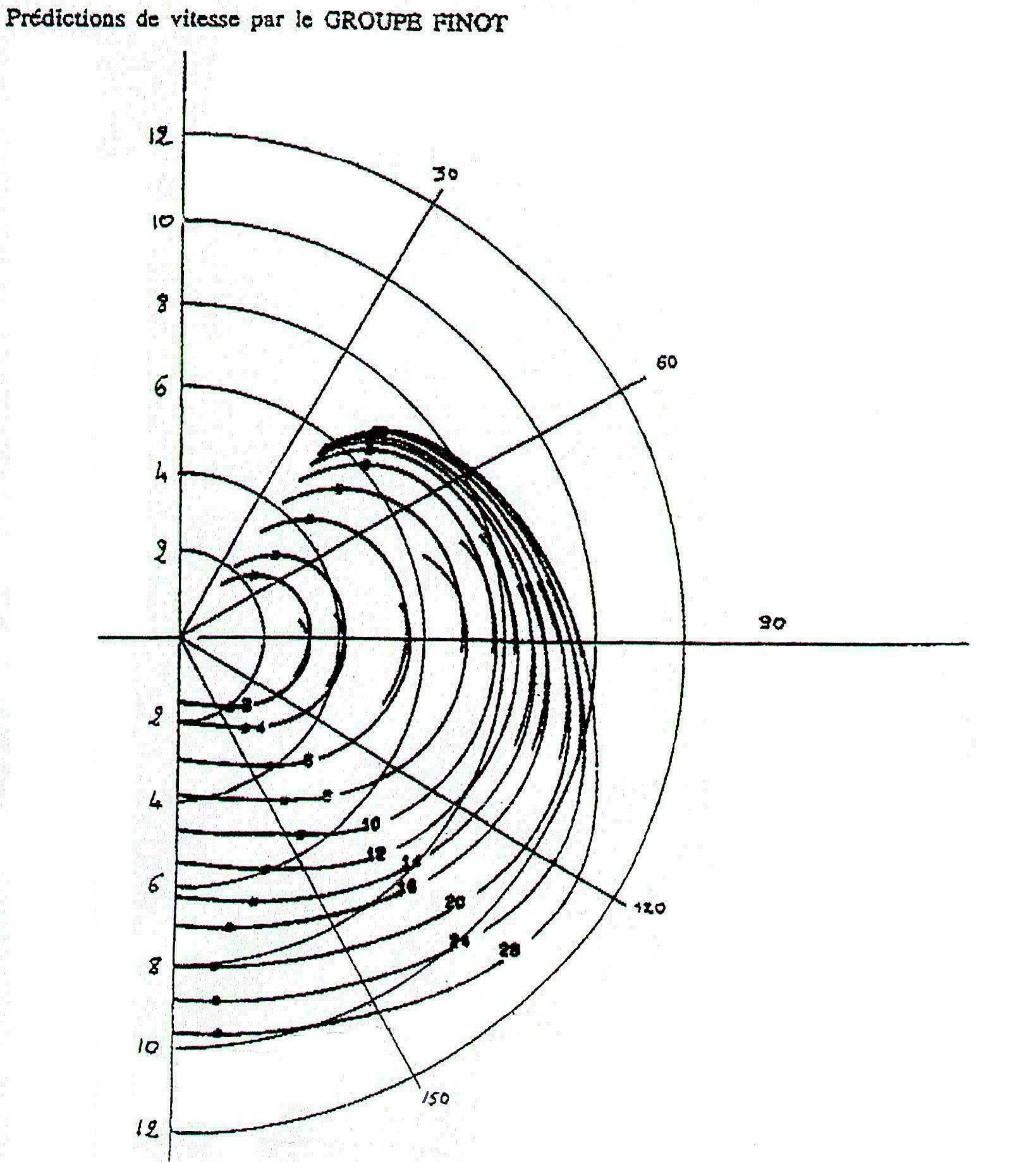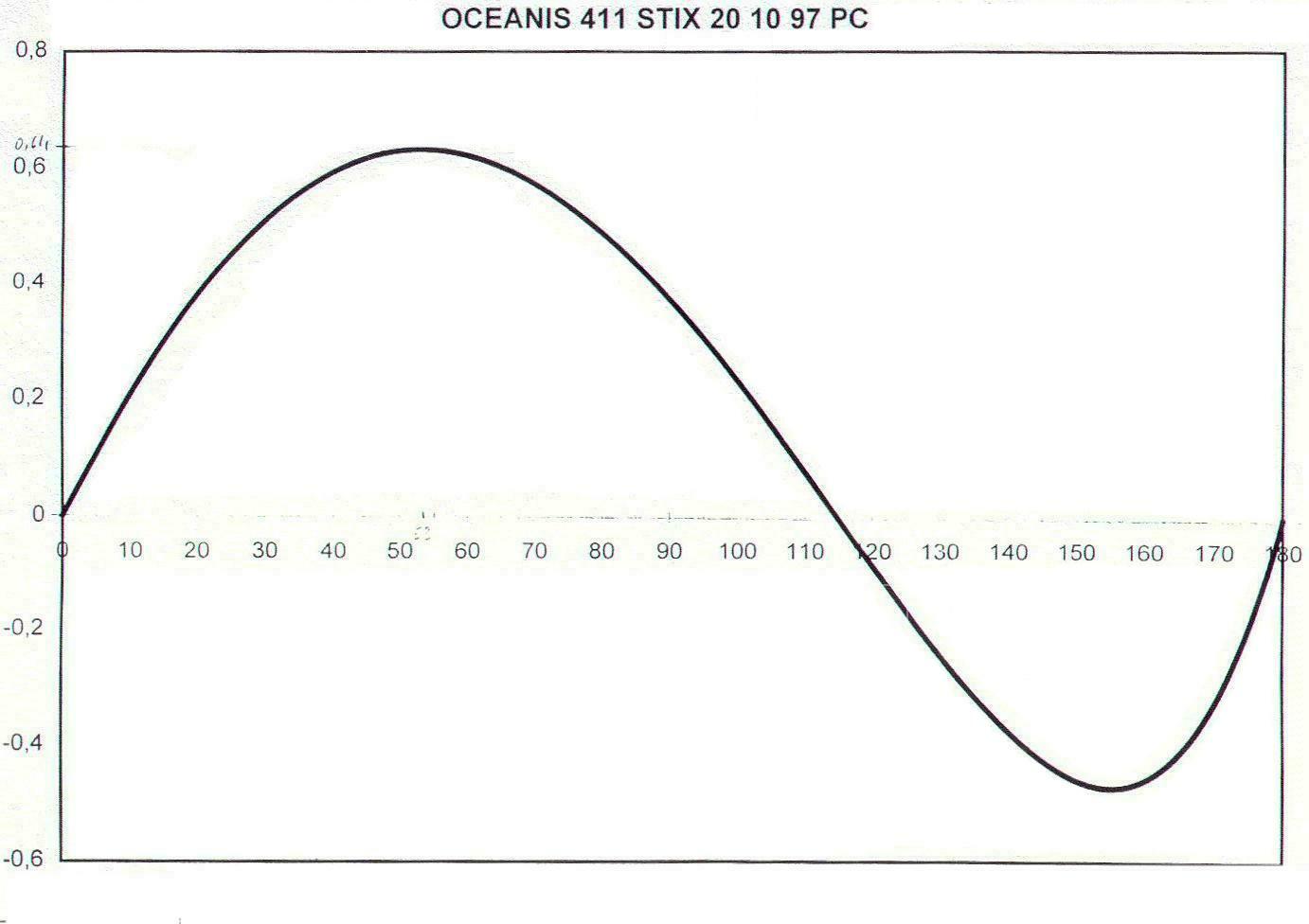BENETEAU 411 "POLARS"
posted 11-17-01

The diagram above represents the "theoretical performance" of the Beneteau 411 at different wind speeds and different wind angles.
Note: It does NOT reflect variable factors such as: wave action, current, shallow keel, boat handling skills, condition of bottom, furling sails, genoa under 150%, and weight & weight distribution (e.g., fuel, water, air conditioner, genset, shallow keel, dinghy, etc.). Under favorable conditions, boat performance may exceed theoretical predictions.
How to read the Polar diagram:
The perfect semi-circle lines represent the boat speed (zero to 12 knots).
The numbers outside the semi-circle from 30 to 150 indicate degrees relative to the wind.
(Zero degrees is head to wind, and 180 is dead down wind.)
Curved lines show the true wind speed in knots.
Theoretical performance:
(Boat starts moving at 35 degrees.)
Boat speed @ 12 knots true wind:
180 degrees (dead downwind) = 5.5 knots boat speed
150 degrees = 6.2 knots boat speed
120 degrees = 7.9 knots boat speed
90 degrees = 8.3 knots boat speed
60 degrees = 7.6 knots boat speed
35 degrees = 5.0 knots boat speed
Boat
speed based on true wind @ 90 degree wind angle:
WIND
SPEED = BOAT SPEED
3
knots wind speed = 3.0 knots boat speed
4 knots wind speed = 4.2 knots
boat speed
6
knots wind speed = 5.5 knots boat speed
8 knots wind speed = 7.0
knots boat speed
10 knots wind speed = 7.8 knots boat speed
12 knots wind speed = 8.2 knots boat speed
16 knots wind speed = 8.5 knots boat speed
18 knots wind speed = 8.7 knots boat speed
20 knots wind speed = 9.2 knots boat speed
STABILITY
CURVE

Heeling
more than 115 degrees (mast is well under water!) will cause the 411 to be
unable to upright itself. This is because the
(standard) keel no longer has enough weight to offset the weight shift.